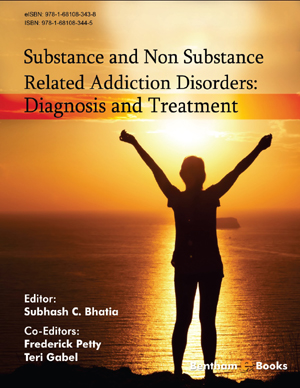Abstract
Cannabis or marijuana also called pot, grass, weed, herb etc. is derived from flowers, leaves, stem or seeds of cannabis sativa plant. It is consumed by smoking or mixing it with foods and beverages. Hashish is a resinous material made from cannabis plant . Cannabis and illicit synthetic THC compounds like “spice” K2” have similar psychoactive effects which are mediated through binding with cannabinoid receptor CB1. Whereas binding with CB2 receptors impacts immunity. Anandamides are the endogenous ligands for these receptors. THC is lipophilic and is deposited in fatty tissue and can be detected in the urine in chronic cannabis users for up to 30 days. THC synthetic compounds, Dronabinol (Marinol) and Nabilone (Cesamet) are approved for medicinal use in oncology, ophthalmology and AIDS. CB1 receptors binding in hippocampus causes short-term memory problems whereas binding in nucleus accumbens causes euphoria. Psychiatric disorders are mood and anxiety disorders. Psychosis is also reported. Genetic factors, as evidenced by twin studies, contribute from 30 to 80% variance to this risk. There are no pharmacological treatments approved for cannabis withdrawal. Short-term symptomatic treatment with nonbenzodiazepine anxiolytics, antidepressants, or hypnotics may be considered. Cognitive-behavioral, motivational enhancement and family therapy, contingency management and self-help groups are valuable psychosocial treatment options.
Keywords: Anadamides, Cannabinoid receptors CB1 and CB2, Cannabis, Grass, Hashish, Hemp, Herb, Herbal Incense, K2, Marijuana, Pot, Spice, Synthetic Cannabinoids, THC, Weed.






















